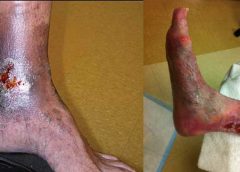Donna Sardina, RN, MHA, WCC, CWCMS, DWC, OMS
Have you ever faced responsibility for a patient-care situation you learned about in school but had yet to encounter in the real world? With so many different health conditions and constant advancements in medical care, it’s not surprising that this happens frequently to many clinicians.
The first and easiest way for most of us to handle this situation is to ask our coworkers what to do. While this isn’t necessarily a bad thing, we as clinicians should reach a little further and get corroboration of what coworkers tell us. What we learn on the job may sound—and even seem—credible but it also needs validity so it can stand up in a legal situation. Recently, I was teaching a class to clinicians on ostomy care when one student shrieked, “Our entire hospital system has been doing this wrong for years.” (more…)
Read More
